I wonder what the completed Graf Zeppelin would’ve looked like under the Kaiserliche Marine
It was disappointing to not read about the use of airships during the First Great War at the American Front.
EDIT: Oh, wait. You meant this? Never mind.
I wonder what the completed Graf Zeppelin would’ve looked like under the Kaiserliche Marine
I wonder what the completed Graf Zeppelin would’ve looked like under the Kaiserliche Marine
I have the Graf Zeppelin on that chart, and not much different from OTL.It was disappointing to not read about the use of airships during the First Great War at the American Front.
EDIT: Oh, wait. You meant this? Never mind.
I meant what it would’ve looked like for real.I have the Graf Zeppelin on that chart, and not much different from OTL.
I'm shocked that Argentina didn't lose it's two battleships when things settled down in South America she was facing Chile and Brazil alone.A Capital Ship recognition chart for the US Navy made in 1941 just before the outbreak of the Second Great War.


Based on this, in your head-cannon, what are the furthest advances for the Russians during GW2? They'll surely conquer the Baltic and make headway into East Prussia and some into A-H Galicia.The 10th Motorized Cavalry Brigade

A photograph of troops from the Polish 10th Motorized Cavalry Brigade (aka the Black Brigade) under the command of Colonel Stanislaw Maczek during the Battle of Warsaw, circa 1942. This unit was first formed in 1938 by the Polish Army as a rapid deployment force with large numbers of barrels and other armored vehicles, in which this unit would go on to fight throughout the Second Great War.
The gates of Warsaw, in which my next big post I will talk about the Battle of Warsaw.Based on this, in your head-cannon, what are the furthest advances for the Russians during GW2? They'll surely conquer the Baltic and make headway into East Prussia and some into A-H Galicia.




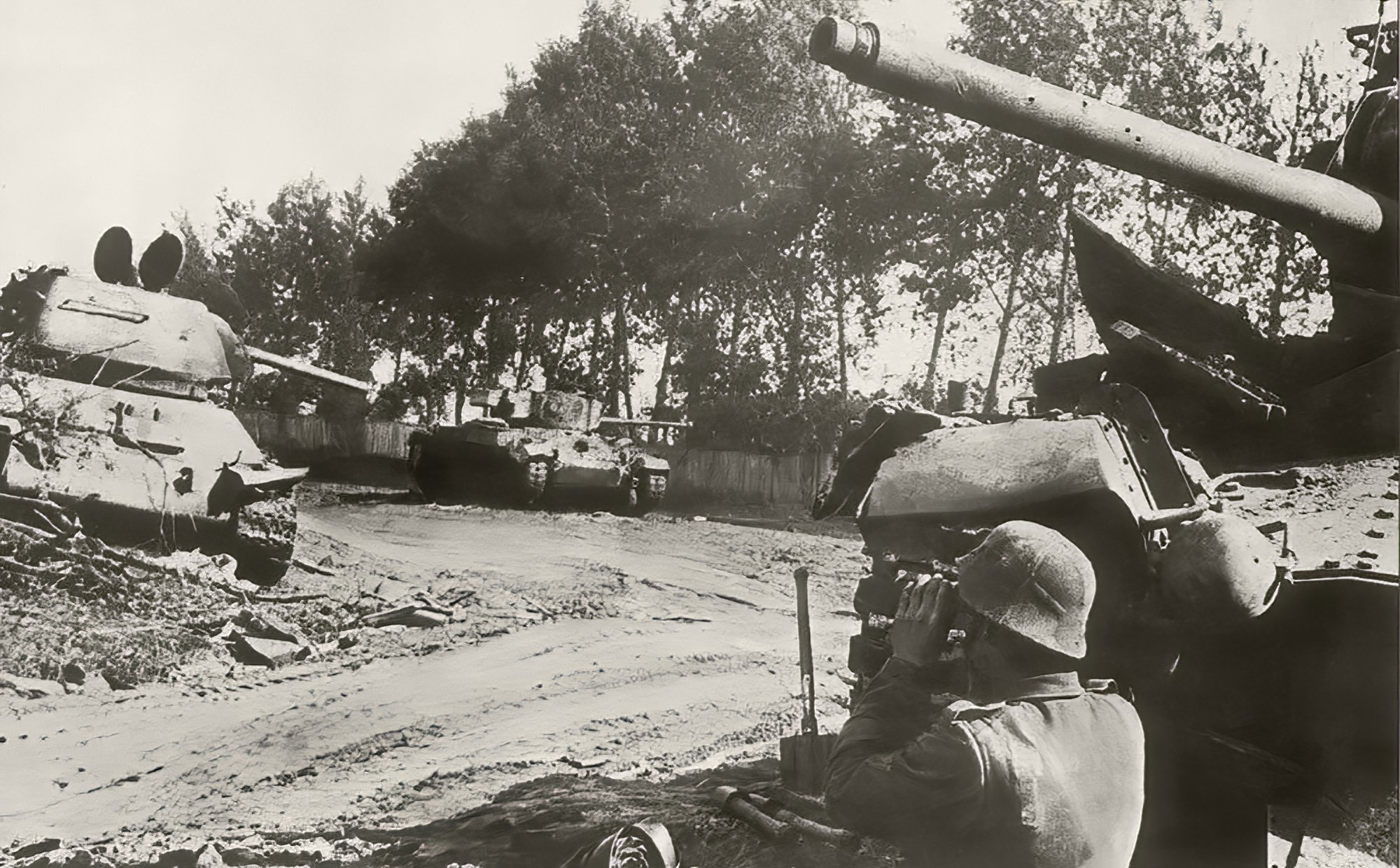

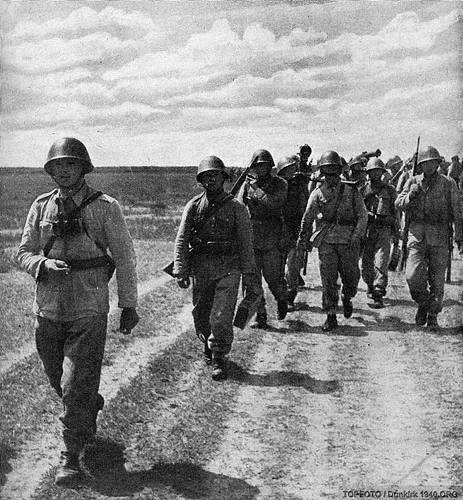

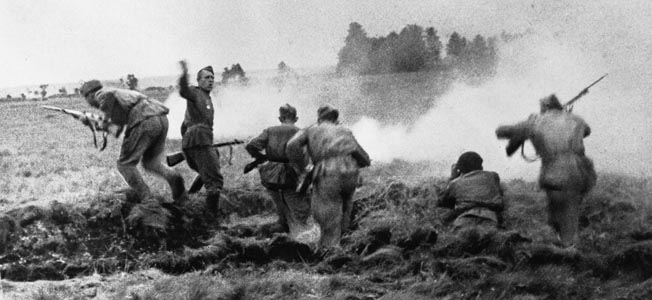
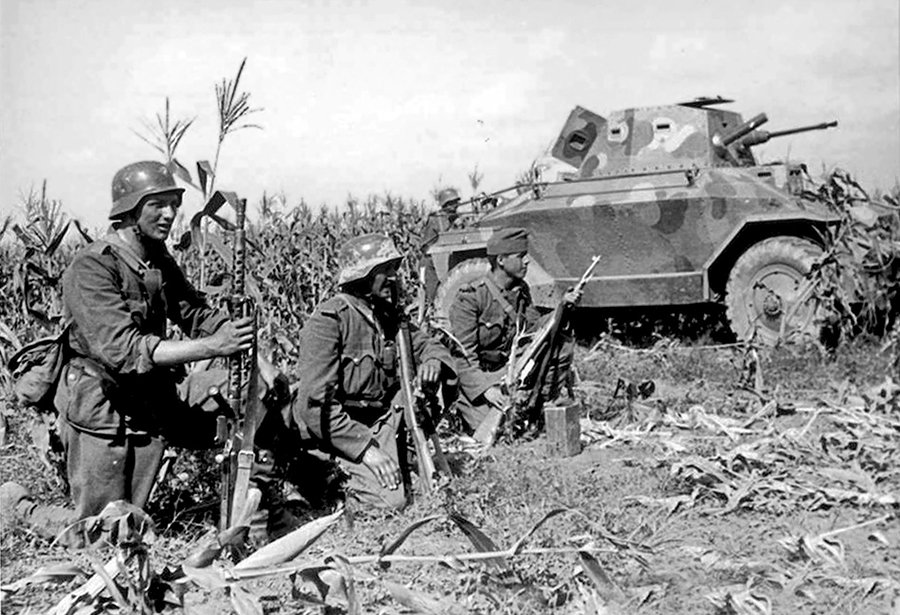
Can't wait for the next chapter! On a critical note, how is Vasilevskiy still able to serve in the Imperial Russian Army when he switched over to the Bolsheviks during the Civil War? Wouldn't there be a massive purge and imprisonment of people who fought against the Empire? What was it like for Red POWs after the Civil War in your head cannon? What else of the interwar period in Russia?Blood on the Vistula: The Battle of Warsaw. Part 1, July-September 1942.

A Polish radioman relaying messages out toward the frontlines during the Battle of Warsaw.
During Russia's successful invasion of Eastern Europe in June of 1941, the Imperial Russian Centre Front under General Aleksandr Vasilevsky would smash through the poorly organized White Ruthenian and Ukrainian Armies before crossing over their borders with Poland and doing battle with the Polish Army. Despite having inferior equipment to the Russian Invaders, the Poles however would slow down their enemies advance, in doing so, would immensely delay their enemy's march toward Warsaw. In September, the Russians were able to reach the banks of the Bug River where their advance would come to a grinding halt thanks to the formidable defenses on the western bank of the Bug as well as the rapid deployment of German reinforcements. Later that month, the Polish-German forces would launch a counter-attack which would drive the Russians as far away back to the city of Pińsk to the East.

A Polish wz. 36 Bofors Anti-Barrel gun at a position near the Kobryń, circa October 1941.

A captured T-26 Keg carrying soldiers into battle in a skirmish near Słonim, December 1941.
In the Spring of 1942, the Russian High Command would begin the planning stages of a renewed offensive which was soon dubbed as Operation Sirius with the goal of seizing Warsaw and the Russians hoped that this could open up the door to the capture of the German capital of Berlin. For Operation Sirius, the Russians had at their disposal a force of around 1 million men, 27,000 field guns and artillery pieces, 1,500 barrels, and 2,300 combat aircraft. The plan would call for the three main formations of the offensive (from positions near Lida, Pińsk, and Rivne respectively), in which the north and southern formations were to surround the city while the center force was to thrust straight toward the city.
Facing them, the Central Powers had constructed a line of defense running down from the city of Lida all the way down to Kowel. Manning this line were a total of 8 Polish and 14 German divisions, commanding them was the General Wilhelm List, who had under his command 255,000 men, 9,000 artillery pieces, and 230 barrels in addition to elements of the Polish Air Force and German Luftwaffe consisting of 674 combat aircraft. In rear area, the Polish Army reserve forces under General Juliusz Rommel had a combined force of a total of 360,000 men, 16,000 artillery guns, 365 barrels, and 560 Polish Air Force aircraft. Backing up Rommel's forces were units under the command of General Erich von Manstein who had a force of 395,000 men, 18,000 guns, 500 barrels, and 780 Luftwaffe planes. A contingent of Austro-Hungarian forces under General Ludvik Svoboda who commanded a force of 40,000 men, 2,500 artillery pieces, 186 barrels, and 240 aircraft.
On July 5th, 1942, after months of preparations by both sides, the Russians would launch their offensive and within a period of days, would penetrate the so-called LK (Lida-Kowel) Defensive Line, forcing the German-Polish forces to retreat toward their secondary defenses on the Bug River. For about a week, the Germans and Poles would fight a series of delaying actions in order to both rush needed reserves to the front and to prepare the Bug Defensive line for the oncoming Russian Invaders. One notable engagement was at the city of Brześć Litewski, where a defending force of 2,000 German and Polish soldiers with the support of 2 armored trains and 15 Panzer III barrels defended the city's fortress against a much more powerful force of 17,000 Russians and 100 barrels. Even though the Russian eventually had overcome the defenders after a week of heavy fighting, this would buy time for the Central Powers forces to fortify the Bug Line.

A colorized photo of German soldiers fighting against Russians during the Battle of the Brześć Fortress, circa July 15th, 1942.

German soldiers from the 28th Jäger Division after skirmish near Kowel.
The next major battle in the Russian drive toward Warsaw would occur northwest of the city of Białystok at the town of Sokolka on July 16th, where a elements of a Russian motorized division would engage in a confrontation with the German 3rd Motorized Infantry Division. During the battle, the Germans would inflict a large number of casualties against the Russians, notably knocking a large number of armored vehicles. A few days later, the Russian 5th Tank Corps with the support of the 56th and 91st Rifle Divisions would launch a renewed attack on Sokolka and would break through toward Białystok which would quickly fall to the Russians. Their commanding officer, General Ivan Chernyakhovsky, after hours consultation would make the decision to cross the Bug River at the city of Wyszkow instead of his original objective of Płock (which was just 30 miles west of Warsaw) in order to the other army groups fighting against the Germans and the Poles on the Bug River Line and even trap large numbers of Central Powers troops between the Vistula and Bug Rivers. On July 26th, Chernyakhovsky's Trans-White Ruthenian Front would make his move by launching a three pronged attack, one each aiming at the directions of Bielsk Podlaski, Ostrow Mazowiecka, and Lomza, the latter direction was to secure Trans-White Ruthenian Front's flank on the banks of the Narew River against any potential German-Polish counter-attack. Within two days, the Russians were able to sweep aisde their enemies at all three of their objectives and reach the banks of the Bug River, but were unable to make a successful crossing largely due to intense air attacks made by both the Luftwaffe and the Polish Air Force.

An artist's rendition of a Luftwaffe Ju-88 bombing Russian forces near Ostrow Mazowiecka.
On August 3rd, Polish ground forces under General Franciszek Kleeberg would launch a counter-attack with ample air support against the Russians at Wyszkow. This attack would prove to be rather successful as Kleeberg's forces were able force the element of the 405th Motorized Rifle Division all the way back to the eastern most reaches of the town of Ostrow Mazowiecka where the Poles halted the drive after heavy losses to their armored forces. Two days later, a German forces consisting of two motorized infantry divisions with the support of a battalion of the new Tiger heavy barrel under the command of General Georg Stumme would launch a counter-attack out of East Prussia, where they surprised for the forward Russian units near the hamlet of Kolno, before making their devastating advance toward Lomza and linking up with Kleeberg's Poles near Zambrow on August 8th. This sector of the front would not see any significant actions for weeks as both sides rested and reorganized their troops.

Polish soldiers from the 10th Infantry Division near Szumowo.

A Tiger I heavy barrel with infantry support during the Kolno-Lomza counter-attack, which was the first major battle for the new German Panzer.
To the south on August 11th, the Russian forces comprising of 705th Motorized Rifle Division with some armored and aerial support would make a breakthrough across the Bug near the city of Wola Uhruska, smashing the German 25th Motorized Infantry Division. The local Russian commander, Ivan Grishin (who commanded the 49th Army), would exploit this success to the fullest by ordering his troops to fan out in order to expand the Russian bridgehead over the Bug as well as ordering the 705th Motorized Division and the elements of the 10th Tank Corps to drive to Chelm. With a matter of days, the Russian Army was able to create a massive wedge in the Central Powers' line on the Bug River, thus forcing their enemy to draw up more reserves to try and pinch out the enemy salient. For a fortnight on the southern victory of Operation Sirius, several major engagements would take in and around the cities of Chelm, Leczna, Lublin, and finally of August 25th, Pulawy, where the Russians were able to reach the banks of the Vistula. Girshin would then order his forces to advance up the Vistula to go and capture Warsaw, which his decision to do so instead of trying to encircle the bulk of the German-Polish forces that were still on the Bug Line and east of the Vistula would prove to be a great mistake. On August 26th, a Russian battlegroup consisting of two infantry and an armored division would face against the Polish 10th Motorized Cavalry Brigade (aka the Maczek Brigade) along with a single battalion of Polish StuG III assault guns near the town of Ryki. As a result, the outnumbered Poles (together with support from the Luftwaffe and Polish Air Force) would inflict heavy losses on the Russians, thus for the time being, delaying their drive to Warsaw.

Soldiers of the Maczek Brigade on motorcycles moving to take up defensive positions near Ryki.

Imperial Russian Army soldiers during a firefight with German troops at the town of Konstantynow.
On the same day as fighting was taking place at Ryki, the Russians would make another successful crossing of the Bug near Brześć, who would immediately would make an advance in the direction of Warsaw. These forces were able to make it as far as Biala Podlaska before running into powerful elements of the 6th Panzer Army commanded by General Friedrich von Paulus, whose forces bloodied the Russians and forcing them to halt their advance for a few days. This time permitted, would enable the Central Powers precious time to further shore up the defenses on the outskirts of Warsaw and to bring up more reinforcements from within the German Reich. On August 28nd, the Austro-Hungarian forces under General Svoboda would finally be committed into the fight as his troops were put into action near the city of Lubartow just north of Lublin. During three days of fighting, the Bohemian troops were able to recapture the city from the Russians, but would soon be forced out by a powerful Russian counter-attack. In the north on the September 2nd, elements Chernyakhovsky's Trans-White Ruthenian Front would launch a renewed attack toward both Wyszkow and Płock. Both Kleeberg's and Stumme's forces would suffer heavy losses at the hands of the enemy, in which General Stumme would die of a heart attack during an air attack on his vehicle convoy on September 3rd. General Kleeberg would quickly assume command of the remainder of Stumme's forces and made an impromptu retreat toward the Narew.

Czech soldiers during a firefight northeast of Lubartow.
I just read that Vasilevskiy had only been conscripted by the Bolsheviks, and really didn't do all the much with them until the Polish-Soviet War in 1919.Can't wait for the next chapter! On a critical note, how is Vasilevskiy still able to serve in the Imperial Russian Army when he switched over to the Bolsheviks during the Civil War? Wouldn't there be a massive purge and imprisonment of people who fought against the Empire? What was it like for Red POWs after the Civil War in your head cannon? What else of the interwar period in Russia?
Makes sense. The Tsarists will screen any Reds for their service, what they did, and whether they were forced to join or not.I just read that Vasilevskiy had only been conscripted by the Bolsheviks, and really didn't do all the much with them until the Polish-Soviet War in 1919.
Blood on the Vistula: The Battle of Warsaw. Part 1, July-September 1942.

A Polish radioman relaying messages out toward the frontlines during the Battle of Warsaw.
During Russia's successful invasion of Eastern Europe in June of 1941, the Imperial Russian Centre Front under General Aleksandr Vasilevsky would smash through the poorly organized White Ruthenian and Ukrainian Armies before crossing over their borders with Poland and doing battle with the Polish Army. Despite having inferior equipment to the Russian Invaders, the Poles however would slow down their enemies advance, in doing so, would immensely delay their enemy's march toward Warsaw. In September, the Russians were able to reach the banks of the Bug River where their advance would come to a grinding halt thanks to the formidable defenses on the western bank of the Bug as well as the rapid deployment of German reinforcements. Later that month, the Polish-German forces would launch a counter-attack which would drive the Russians as far away back to the city of Pińsk to the East.

A Polish wz. 36 Bofors Anti-Barrel gun at a position near the Kobryń, circa October 1941.

A captured T-26 Keg carrying soldiers into battle in a skirmish near Słonim, December 1941.
In the Spring of 1942, the Russian High Command would begin the planning stages of a renewed offensive which was soon dubbed as Operation Sirius with the goal of seizing Warsaw and the Russians hoped that this could open up the door to the capture of the German capital of Berlin. For Operation Sirius, the Russians had at their disposal a force of around 1 million men, 27,000 field guns and artillery pieces, 1,500 barrels, and 2,300 combat aircraft. The plan would call for the three main formations of the offensive (from positions near Lida, Pińsk, and Rivne respectively), in which the north and southern formations were to surround the city while the center force was to thrust straight toward the city.
Facing them, the Central Powers had constructed a line of defense running down from the city of Lida all the way down to Kowel. Manning this line were a total of 8 Polish and 14 German divisions, commanding them was the General Wilhelm List, who had under his command 255,000 men, 9,000 artillery pieces, and 230 barrels in addition to elements of the Polish Air Force and German Luftwaffe consisting of 674 combat aircraft. In rear area, the Polish Army reserve forces under General Juliusz Rommel had a combined force of a total of 360,000 men, 16,000 artillery guns, 365 barrels, and 560 Polish Air Force aircraft. Backing up Rommel's forces were units under the command of General Erich von Manstein who had a force of 395,000 men, 18,000 guns, 500 barrels, and 780 Luftwaffe planes. A contingent of Austro-Hungarian forces under General Ludvik Svoboda who commanded a force of 40,000 men, 2,500 artillery pieces, 186 barrels, and 240 aircraft.
On July 5th, 1942, after months of preparations by both sides, the Russians would launch their offensive and within a period of days, would penetrate the so-called LK (Lida-Kowel) Defensive Line, forcing the German-Polish forces to retreat toward their secondary defenses on the Bug River. For about a week, the Germans and Poles would fight a series of delaying actions in order to both rush needed reserves to the front and to prepare the Bug Defensive line for the oncoming Russian Invaders. One notable engagement was at the city of Brześć Litewski, where a defending force of 2,000 German and Polish soldiers with the support of 2 armored trains and 15 Panzer III barrels defended the city's fortress against a much more powerful force of 17,000 Russians and 100 barrels. Even though the Russian eventually had overcome the defenders after a week of heavy fighting, this would buy time for the Central Powers forces to fortify the Bug Line.

A colorized photo of German soldiers fighting against Russians during the Battle of the Brześć Fortress, circa July 15th, 1942.

German soldiers from the 28th Jäger Division after skirmish near Kowel.
The next major battle in the Russian drive toward Warsaw would occur northwest of the city of Białystok at the town of Sokolka on July 16th, where a elements of a Russian motorized division would engage in a confrontation with the German 3rd Motorized Infantry Division. During the battle, the Germans would inflict a large number of casualties against the Russians, notably knocking a large number of armored vehicles. A few days later, the Russian 5th Tank Corps with the support of the 56th and 91st Rifle Divisions would launch a renewed attack on Sokolka and would break through toward Białystok which would quickly fall to the Russians. Their commanding officer, General Ivan Chernyakhovsky, after hours consultation would make the decision to cross the Bug River at the city of Wyszkow instead of his original objective of Płock (which was just 30 miles west of Warsaw) in order to the other army groups fighting against the Germans and the Poles on the Bug River Line and even trap large numbers of Central Powers troops between the Vistula and Bug Rivers. On July 26th, Chernyakhovsky's Trans-White Ruthenian Front would make his move by launching a three pronged attack, one each aiming at the directions of Bielsk Podlaski, Ostrow Mazowiecka, and Lomza, the latter direction was to secure Trans-White Ruthenian Front's flank on the banks of the Narew River against any potential German-Polish counter-attack. Within two days, the Russians were able to sweep aisde their enemies at all three of their objectives and reach the banks of the Bug River, but were unable to make a successful crossing largely due to intense air attacks made by both the Luftwaffe and the Polish Air Force.

An artist's rendition of a Luftwaffe Ju-88 bombing Russian forces near Ostrow Mazowiecka.
On August 3rd, Polish ground forces under General Franciszek Kleeberg would launch a counter-attack with ample air support against the Russians at Wyszkow. This attack would prove to be rather successful as Kleeberg's forces were able force the element of the 405th Motorized Rifle Division all the way back to the eastern most reaches of the town of Ostrow Mazowiecka where the Poles halted the drive after heavy losses to their armored forces. Two days later, a German forces consisting of two motorized infantry divisions with the support of a battalion of the new Tiger heavy barrel under the command of General Georg Stumme would launch a counter-attack out of East Prussia, where they surprised for the forward Russian units near the hamlet of Kolno, before making their devastating advance toward Lomza and linking up with Kleeberg's Poles near Zambrow on August 8th. This sector of the front would not see any significant actions for weeks as both sides rested and reorganized their troops.

Polish soldiers from the 10th Infantry Division near Szumowo.

A Tiger I heavy barrel with infantry support during the Kolno-Lomza counter-attack, which was the first major battle for the new German Panzer.
To the south on August 11th, the Russian forces comprising of 705th Motorized Rifle Division with some armored and aerial support would make a breakthrough across the Bug near the city of Wola Uhruska, smashing the German 25th Motorized Infantry Division. The local Russian commander, Ivan Grishin (who commanded the 49th Army), would exploit this success to the fullest by ordering his troops to fan out in order to expand the Russian bridgehead over the Bug as well as ordering the 705th Motorized Division and the elements of the 10th Tank Corps to drive to Chelm. With a matter of days, the Russian Army was able to create a massive wedge in the Central Powers' line on the Bug River, thus forcing their enemy to draw up more reserves to try and pinch out the enemy salient. For a fortnight on the southern victory of Operation Sirius, several major engagements would take in and around the cities of Chelm, Leczna, Lublin, and finally of August 25th, Pulawy, where the Russians were able to reach the banks of the Vistula. Girshin would then order his forces to advance up the Vistula to go and capture Warsaw, which his decision to do so instead of trying to encircle the bulk of the German-Polish forces that were still on the Bug Line and east of the Vistula would prove to be a great mistake. On August 26th, a Russian battlegroup consisting of two infantry and an armored division would face against the Polish 10th Motorized Cavalry Brigade (aka the Maczek Brigade) along with a single battalion of Polish StuG III assault guns near the town of Ryki. As a result, the outnumbered Poles (together with support from the Luftwaffe and Polish Air Force) would inflict heavy losses on the Russians, thus for the time being, delaying their drive to Warsaw.

Soldiers of the Maczek Brigade on motorcycles moving to take up defensive positions near Ryki.

Imperial Russian Army soldiers during a firefight with German troops at the town of Konstantynow.
On the same day as fighting was taking place at Ryki, the Russians would make another successful crossing of the Bug near Brześć, who would immediately would make an advance in the direction of Warsaw. These forces were able to make it as far as Biala Podlaska before running into powerful elements of the 6th Panzer Army commanded by General Friedrich von Paulus, whose forces bloodied the Russians and forcing them to halt their advance for a few days. This time permitted, would enable the Central Powers precious time to further shore up the defenses on the outskirts of Warsaw and to bring up more reinforcements from within the German Reich. On August 28nd, the Austro-Hungarian forces under General Svoboda would finally be committed into the fight as his troops were put into action near the city of Lubartow just north of Lublin. During three days of fighting, the Bohemian troops were able to recapture the city from the Russians, but would soon be forced out by a powerful Russian counter-attack. In the north on the September 2nd, elements Chernyakhovsky's Trans-White Ruthenian Front would launch a renewed attack toward both Wyszkow and Płock. Both Kleeberg's and Stumme's forces would suffer heavy losses at the hands of the enemy, in which General Stumme would die of a heart attack during an air attack on his vehicle convoy on September 3rd. General Kleeberg would quickly assume command of the remainder of Stumme's forces and made an impromptu retreat toward the Narew.

Czech soldiers during a firefight northeast of Lubartow.

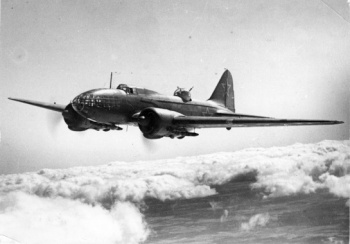
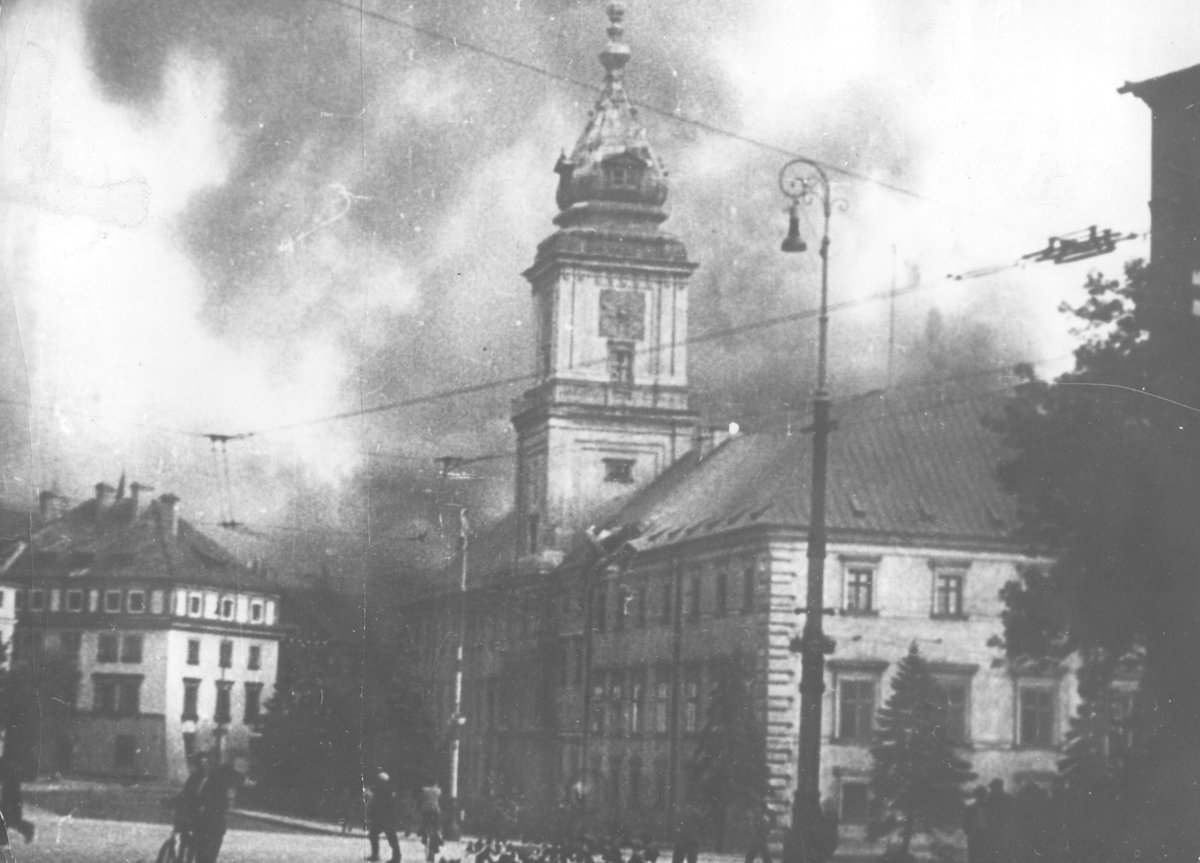
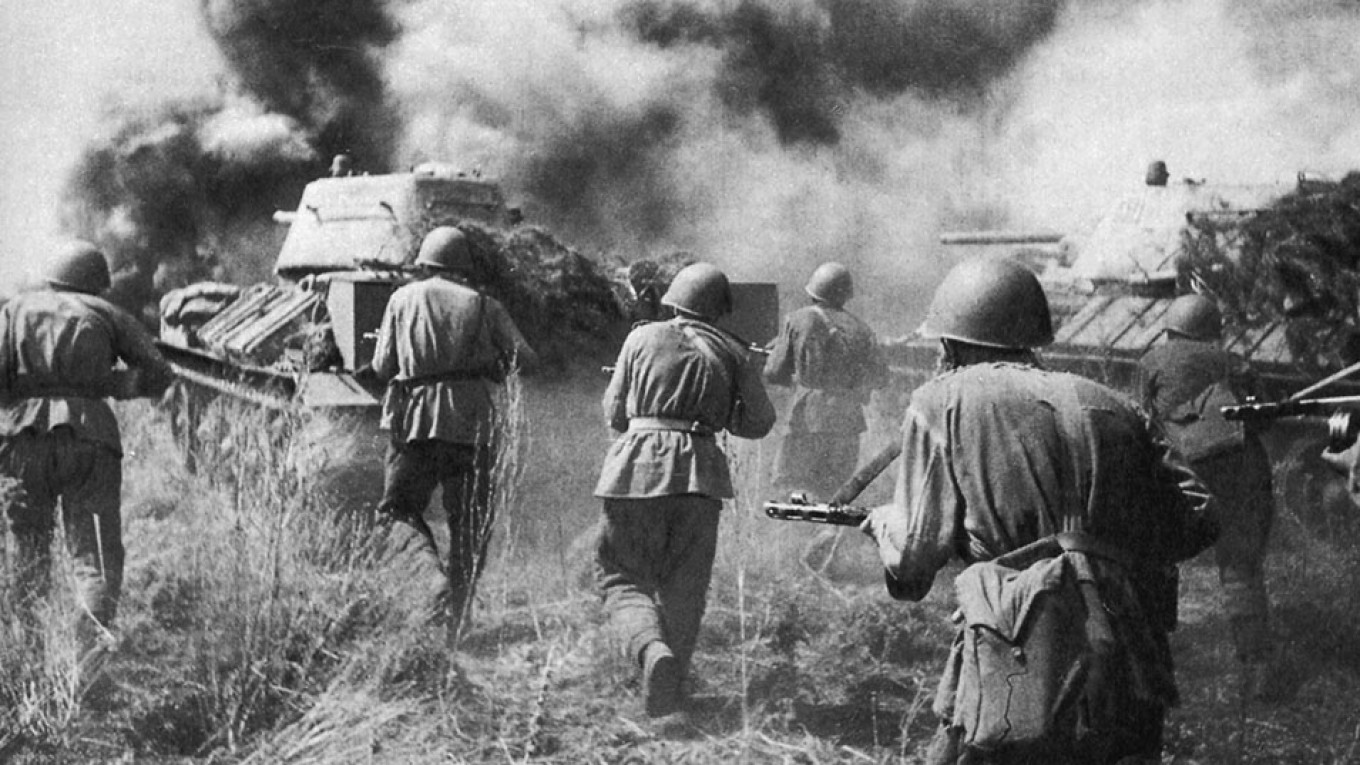


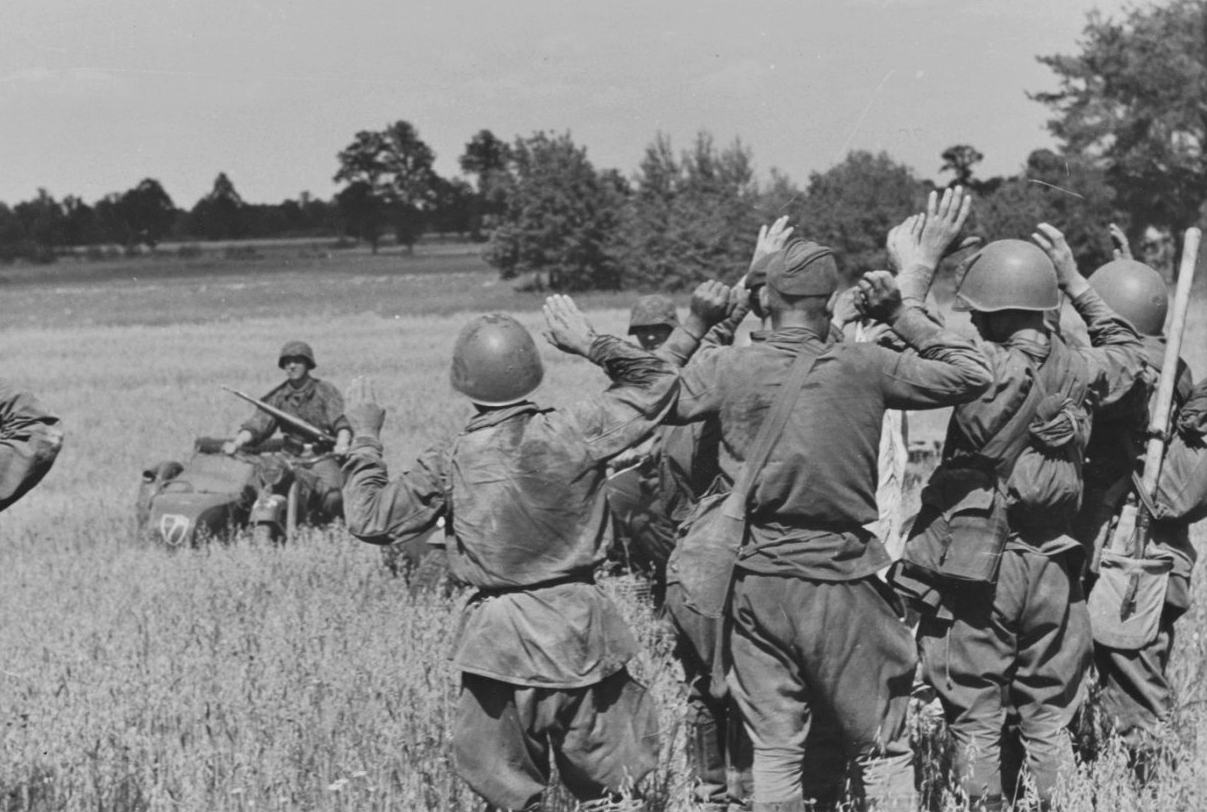

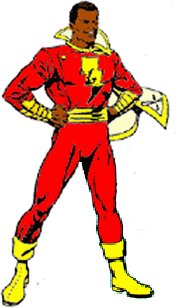
Ight, that was a great one. Props to you for writing on the war in Europe in detail. Like your in-depth storytelling overall. On content, what becomes of Wilhelm List after he is captured? On the order of battles, what army groups/fronts are involved as well as armies apart form those mentioned?Blood on the Vistula: The Battle of Warsaw. Part 2, September-November 1942.

Polish soldiers gathered for inspection in Warsaw prior to being sent off into battle.
On September 5th, the Battle of Warsaw would formally commence, when in the early morning hours of that day, the Imperial Russian Air Force would launch a full-scale air raid on the city with a force of 80 Ilyushin Il-4 bombers with an escort of 40 Yak-1 fighter planes. The Russians would drop bombs into the heart of Warsaw, destroying house and other buildings, and killing soldiers and civilians on the ground. However, the defenders in return would shoot down 21 bombers and 15 fighters with both their own fighter planes and with anti-aircraft artillery.

An Ilyushin Il-4 medium bomber similar to those that had taken part in the September 5th Air Raid on Warsaw.

A photograph of the Warsaw Royal Palace, one of the many landmarks of the city to be destroyed by the Russian bombers.
On that same day, the powerful elements of the 10th White Guards Tank Corps under the command of General Sergei Bunyachenko would gain a major victory at the village of Sosna Trojanki, in which his forces would effectively destroy the German 24th Panzer Division and would capture a headquarters where General Wilhelm List and his staff were at. Following this, Bunyachenko would order his units to swing south toward Siedlce in order to trap the German-Polish forces under General Paulus that were fighting around Biala Podlaska. His advance would however be stopped at Wola Suchożebrska by a detachment of the Polish 2nd Grochow Uhlan Regiment supported by some Flak 88 anti-aircraft guns of the German Luftwaffe. This skirmish would enable Paulus to make a tactical withdraw to prevent his troops from being encircled by both Bunyachenko's troops from the north and by powerful elements of Girshin's 49th Corps to the south near Lukow. The retreated would be completed by September 7th when Paulus's forces established new defensive positions near Minsk Mazowiecki.

A destroyed British made Valentine tank which was supplied to the Russians near Wola Suchożebrska, which was destroyed by a Flak 88.
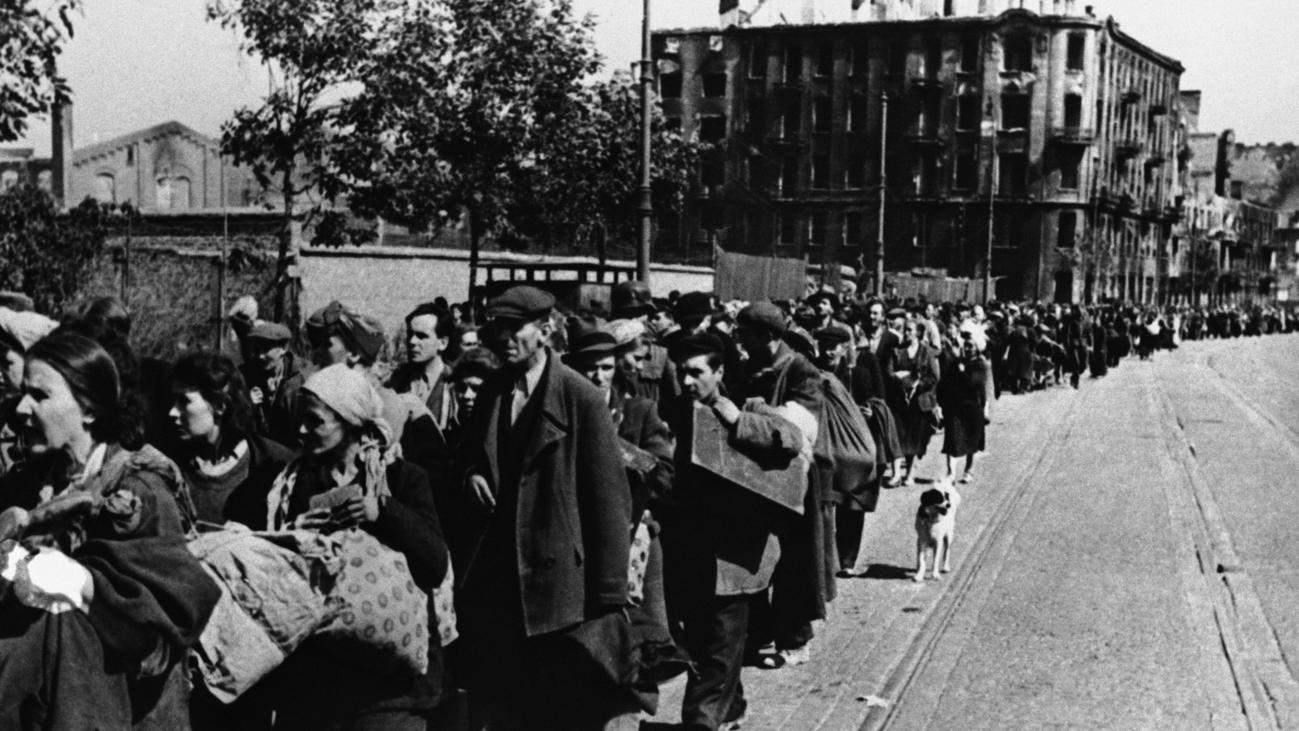
A stream of refugees in the city of Radom, which many of whom were Jews from Eastern Poland, White Ruthenia, and the Ukraine who fled their homes as they feared the Russian troops. The Russian Army had been known to have committed various atrocities against the Jews in Russia and Russian occupied areas.
On September 9th, the Russian forces under Ivan Girshin would make another another attempt of entering Warsaw from the south, but this time by attempting to cross the Vistula near Pulawy. It was planned that once they were able to secure a bridgehead, they would then launch a drive to the north simultaneously with their counter-parts on the otherside of the river. Following a bloody engagement that would last for almost the whole day, the Russians would be able to secure a bridgehead across the Vistula. One day later on the the 10th, the Polish forces under General Wiktor Thommee, who had under his command elements two Polish infantry divisions and a single armored brigade would launch a counter-attack at Janów with heavy artillery and air support. Despite of heavy losses for the Poles, they were able to drive the Russians back across the Vistula. During the battle, General Ivan Grishin, who at the time of the attack was inspecting the troops on the western bank of the Vistula, was killed when his staff car was struck by a Polish howitzer shell. His replacement would be the Latvian born General Max Reyter, who would then order another attempt to break through the Polish defenses at the city of Ryki. Unfortunately for the Russians, this second assault at Ryki would end in much the same way as the first with heavy armored losses to the Polish defenders, who were now armed with heavy caliber anti-barrel weapons.

Russian field guns preparing to fire a barrage at the Polish defenders on the opposite side of the Vistula.

A destroyed Russian heavy barrel in the aftermath of the Second Battle of Ryki.
On September 13th, the Russian forces under the command of Generals Chernyakovski and Reyter would launch a full scale assault in the direction of Warsaw. In the opening hours, the Russian artillery along with formations of bombers would bombard the Central Powers' positions east of the city and in an attempt to soften the defenses up.

Imperial Russian Shock Troops with armored support advancing toward a German held position near Stanisławów.

On that same day, the Germans and Poles would hold a military parade in Warsaw following a decision by the respective high commands of both armies to commit many of their reserves into battle. The troops in that parade would all be dressed in their battle gear as they were prepared to take part in the upcoming struggle for the city.
For a fortnight, a fierce confrontation between the Russians and the Germans and their allies would rage miles from the city of Warsaw, for the Poles, they would fight for every inch of ground. In the north, elements of Chernyakovski's forces would clash the German-Polish forces under the command of General Kleeberg as the Russians would struggle to make a successful crossing of the Narew River. By September 28th, it has become clear that despite of overwhelming odds, the German-Polish defenders outside of Warsaw would not budge and the Russians had suffered immense losses in men and material in trying to punch through. On that same day to the south near Ryki, the amassed forces under General Georg von Küchler consisting of veteran units such as the 10th Motorized Cavalry Brigade as well newly arrived German and Austro-Hungarian forces would launch a counter-attack. These units would catch the Russians off guard and by October 1st, would force the Russian forces to rout away from their would-be prize of Warsaw. The following day, the Battle of Warsaw would come to an end with a massive cavalry charge near Brzozowica where the elements of the 2nd Grochow Uhlan Regiment and the 9th Lesser Poland Uhlan Regiment made a successful attack against the local Russian forces under the command of Bronislav Kaminski. This charge would be very successful completing the Central Powers victory near Warsaw and would be last cavalry charge to made in Europe.
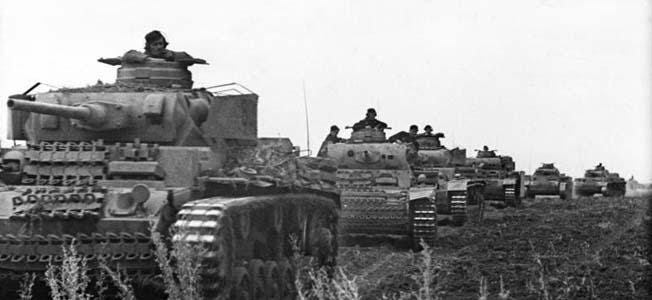
German Panzer IIIs advancing to the front east of Warsaw.

Polish soldiers advancing under heavy fire during a skirmish near Fiukówka.

German soldiers with captured Russians near Minsk Mazowiecki.

Uhlans from the 2nd Grochow Regiment during the famous Brzozowica charge.
Following up their victory near Warsaw, the Central Powers would launch a counter-offensive which by the beginning of November through heavy fighting saw the Russian forces driven back to the Bug River and also driven out of the city of Białystok. By time, both sides' forces had been exhausted from the heavy fighting made during the last few months during the course of Operation Sirius. The Battle of Warsaw had effectively changed the course of the war on the Eastern Front in favor of the Central Powers.
View attachment 641940


Good hunting sir.Found the original source of the picture that can be presumed to be Featherston on the audiobook cover of TCCH


The faces of 'Wrath': Photos that inspired novel on display at museum
When Henri Bristol was assigned to do a book report on "The Grapes of Wrath" in high school, he had an expert on the subject living under his own roofwww.bakersfield.com